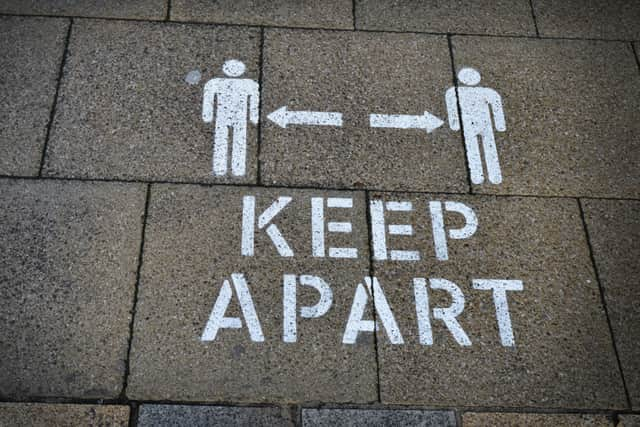East Sussex has lowest Covid infection rate in England
and live on Freeview channel 276
The figures were discussed at a meeting of East Sussex County Council’s cabinet on Tuesday (November 10), as part of an update to councillors on the impact of the coronavirus pandemic within the county.
During the meeting, East Sussex director of public health Darrell Gale told councillors that rates of coronavirus infections had been falling prior to the second national lockdown.
Advertisement
Hide AdAdvertisement
Hide AdHe said: “From a very steep increase in the case rate in the last week of October – and although we still have some days when the daily numbers are as high or higher than the peak of the first wave in April – overall cases rates have reduced.


“This isn’t to do with the lockdown, this is just the serendipitous timing of the lockdown. We are probably not looking at any impact of lockdown on those rates for at least another week, but it already shows we were heading in the right direction anyway.”
According to Mr Gale the latest data (published on November 4) showed East Sussex had the lowest rates of infection in England, while Hastings (with a rate of 31.3 cases per 100,000 people and a total of just 29 cases) had the lowest rates of infection of any local area in England.
At 52 cases per 100,000, the data showed Rother also had one of the lowest rates of infection across England, coming third lowest after Hastings and North Norfolk. It had a total of 50 cases.
Advertisement
Hide AdAdvertisement
Hide AdLewes, with 71 cases and a rate of 68.8, and Wealden, with 89 cases and a rate of 55.1 were also below the national average.
Eastbourne had 88 cases and the highest rate of infection (at 84.4 per 100,000) within East Sussex, although this was still at a level below the national average. Mr Gale said this figure had been higher the week before following outbreaks at several care homes.
While low, Mr Gale said the true figure could be lower, as the data includes some students who are living outside of the county but are registered with East Sussex GPs.
Currently these students only account for around five per cent of the county’s cases, Mr Gale said, but had made up 18 per cent of the total cases in East Sussex three weeks ago..
Advertisement
Hide AdAdvertisement
Hide AdBut Mr Gale warned that the county’s relatively low rates of infection could, in time, prove to be a double-edged sword.
He said: “I am very pleased that we have the low rates of infection that we do in the county. We’ve done some investigation into what the protective factors are.
“However, the warning is that with low rates of incidence we have low rates of immunity. That essentially means if there is significant infection brought into the county – by our residents or by people visiting the county – the only way would be up.
“We just have to bear that in mind in our planning, which is why combination prevention is so important because there is no single tool on its own.”
Advertisement
Hide AdAdvertisement
Hide AdMr Gale also warned against complacency saying preventative measures – such as hand washing, mask wearing and social distancing – remained vital.
He also told councillors the county had above average testing rates, with the highest number of tests in the county taking place in Hastings and Eastbourne.
Mass testing, similar to the pilot scheme in Liverpool, would require military support, although Mr Gale said such a scheme is unlikely to be pursued locally, given the county’s relatively low rates of infection.
He added that a total of 59 covid-19 patients are being treated in Brighton and East Sussex hospitals, although only three patients are currently being treated in intensive care.
Advertisement
Hide AdAdvertisement
Hide AdOne person died while being treated by East Sussex Healthcare NHS Trust this week, while four people had died the week before, Mr Gale said. More up-to-date figures are expected soon.
At the time of writing, 248 people in East Sussex have died within 28 days of a positive test result for coronavirus.